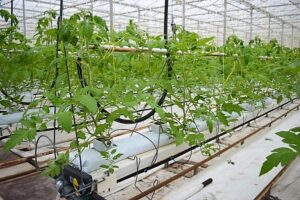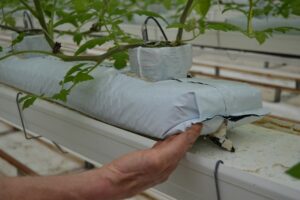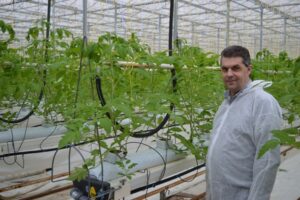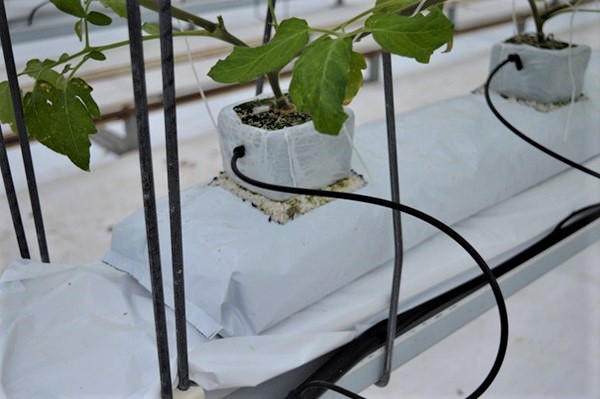Perlite slabs and perlite cubes are a perfect combo. Our customers were happy to share their experience with hortidaily.com and groentennieuws.nl:
Pieter Hoogerbrugge from Kwekerij Hoogerbrugge: “A few days after the planting, the roots were already in the slab.” Colleague grower Peet Withagen of the Zonnekreek tomato nursery is no longer surprised by this quick rooting, even with dark weather at the beginning of December. He has been growing tomatoes on perlite for years and doesn’t want anything else. Both nurseries are working with the new perlite slabs from Willems Perlite. After their investment in new machinery, the company can now produce perlite slabs on a large scale.
Switch from rockwool to perlite
Hoogerbrugge switched from rockwool slabs to perlite slabs. Pieter explains why: “I have been following Peet’s cultivation in recent years and I’ve seen that the crop on perlite was always doing very well. Perlite is also a bit cheaper to purchase and to dispose of, because it’s recycled in compost. This means that you can achieve high productions at a lower cost. That’s exactly what we wanted.”

Planting directly on the slab
Pieter: “I believe that the match between perlite pot and perlite slab is very important. You immediately see the pot properly ‘sucking’ on the slab. Another advantage is that you can plant directly on the slab. So you don’t need a preliminary phase on a sheet, as when growing on rockwool.”
Better moisture control
For Peet Withagen, the capillary effect is the main reason why he has been growing on perlite for “at least fifteen years”. Perlite gives Peet much better control. As a precaution, Peet always makes a little v-shaped cut in the head of the slab. “This keeps the slab airy, especially if you’re going to be draining a lot.”

Kurt Lauwers, sales manager at Willems Perlite, has seen other growers making such cuts sometimes, also in other crops. Certainly not unwise, although the slabs are already equipped with holes for moisture as a standard.
Perlite : a very simple substrate
For Peet, perlite is clearly “a very simple substrate,” with a reputation of being ‘a dry substrate’ that he believes is unjustified. “I once had a broken unit and the plants on perlite did very well even on a very hot day. Puzzling with dripping amounts to get the moisture content back to level is also not necessary at all. You add water and the slabs acquire the right moisture again.”

Available worldwide
Pieter and his brother Erik will have that experience this season, just like more and more other growers of all kinds of crops. The Netherlands has long since ceased to be just a ‘rockwool land’. “Internationally, a lot is already grown on perlite. After all, it is simply a nice, natural product, which is also available worldwide,” says Kurt.
Read the full story in Dutch on groentennieuws.nl and in English on hortidaily.com
